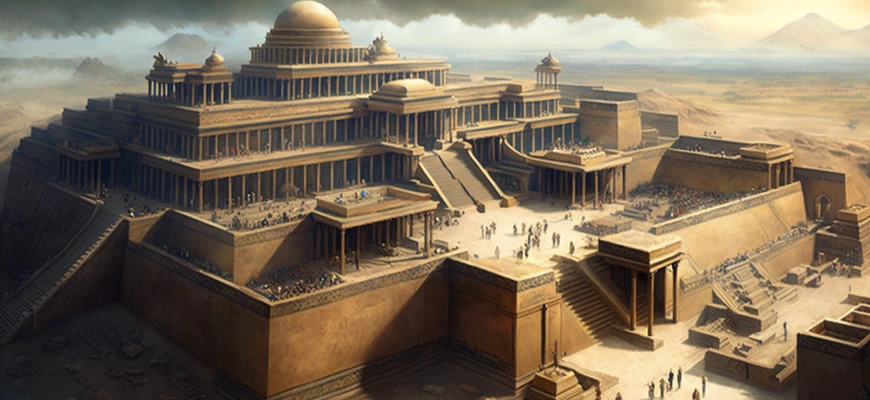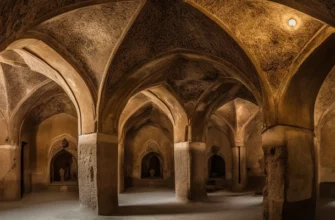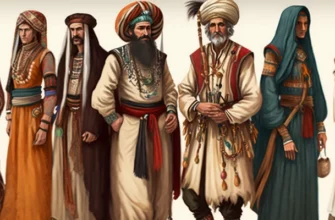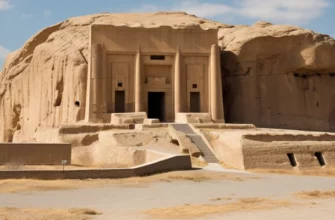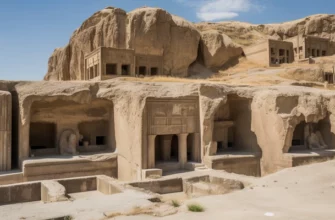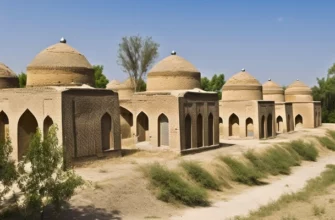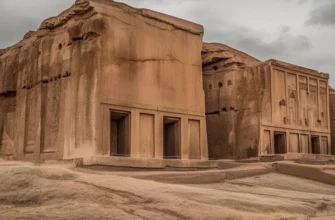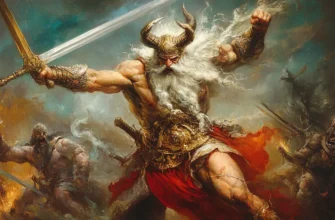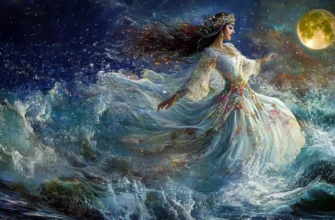The ancient civilization of Iran, which existed from 3400 BC until the Achaemenid conquest in 550 BC, has a rich history and culture. Various civilizations formed in Iran, including the Elamites and Persians. Iran’s social structure included a class system and developed trade and crafts. Iranian culture was known for its advanced art, architecture, religion and philosophy, science, and literature. The Achaemenids conquered Iran and became known for their cultural achievements.
- Ancient history of Iran
- The oldest civilizations in Iran
- The emergence of the Persians and the formation of the Persian Empire
- Culture of Iran
- Art and architecture
- Religion and philosophy
- Science and literature
- The social structure of ancient Iran
- Class system and the role of the monarch
- Development of trade and crafts
- The Achaemenids and their contribution to the development of Iran
- Cultural achievements of the Achaemenids
- Conclusion
Ancient history of Iran
Iran has a long history, beginning with the earliest civilizations on its territory, such as the Elamite civilization, which existed around 2700-1600 BC. It is known that its inhabitants had their own writing system and system of measuring time and length.
The Persians appeared in Iran in the 7th century BC. Their nomadic lifestyle led to the formation of the Persian Empire, founded by Cyrus I, who conquered Media and Lydia. During the reign of Darius I, a system of satrapies was introduced, which allowed the controlled territories to be maintained.
Subsequently, Iran became an arena for power struggles between various empires, such as Alexander the Great, the Parthian Empire, and the Sassanid Empire. During the latter, Iran was a center of culture and science, and the Persian western world became an important center of trade and art. The Sassanids restored imperial power and initiated many cultural innovations. However, they were overthrown by Arab conquerors in the 7th century, which led to the spread of Islam in Iran.
The oldest civilizations in Iran
The territory of Iran was home to various ancient civilizations, including the Elamite civilization, which existed around 2700-1600 BC in the territory of modern Khuzestan. It is known that Elam was a powerful state with its own system of measuring time and length and its own writing system.
Another ancient civilization that existed in Iran was the Indo-Aryan civilization, which began in 1500 BC and developed over decades in India and Pakistan. The Indo-Aryans made up a large part of the population of Iran and played an important role in the formation of Persian and other civilizations.
The Bactrian civilization also existed in Iran between 2500 and 1700 BC in eastern Iran and Afghanistan. The Bactrians are known for their artistic culture and their own language.
The Elamites and their contribution to the formation of Iranian culture
The Elamites were a people who existed in Iran between 2700 and 1600 BC. Their contribution to the formation of Iranian culture lies in the fact that Elamite was one of the first written languages in Iran. In addition, Elamite civilization contributed to the development of architecture, art, and crafts in Iran.
The Elamites were known for their highly developed culture, art, and ingenuity. They were engaged in metallurgy, ceramics, textiles, and other crafts. Elamite architecture, in particular the Madakht Palace, is impressive in its scale and complexity. Elamite artists were also famous for their high level of craftsmanship in creating exquisite items from precious stones, in particular lapis lazuli.
The Elamites became one of the main components of Persian culture, whose influence is felt in the art, music, architecture, and literature of Iran.
The emergence of the Persians and the formation of the Persian Empire
The Persians are an Indo-European people who began to settle in Iran in the 1st millennium BC. The spread of the Persians in Iran was associated with the decline of the influence of the Elamites and other peoples.
In the 6th century BC, the Persians were led by King Cyrus, who managed to unite the Persian and Median tribes and create the Persian state. After Cyrus’ death, his son Cambyses II succeeded him to the throne and conquered Egypt, and later Darius I ascended the throne and began the formation of the Persian Empire.
The Persian Empire was the largest and most powerful state of its time, covering the territories of modern Iran, Iraq, Afghanistan, and parts of India. The Persians managed to create a large army and develop an effective system of management and administration.
The Persian Empire made a significant contribution to the development of world culture, especially in the fields of literature, art, and architecture. It was also a pioneer in the creation of a system of roads and communication channels, which contributed to the development of trade and relations between nations.
Culture of Iran
The culture of Iran has a rich history and has made many contributions to world culture. The civilization of ancient Iran has its own characteristics and contributions to the development of architecture, art, literature, music, and other areas of culture.
Ancient Iranian architecture is characterized by the use of tall columns, arches, and domes, which became classic forms for Muslim architecture in later times. The influence of religion and philosophy can also be seen in Iranian art, for example, in embroidery, carpets, and other types of handicrafts.
Iranian literature was highly developed, especially during the Middle Ages, when the works of great poets such as Omar Khayyam and Firdausi were written. Iran’s contribution to the development of music is also noteworthy, in particular the emergence of instruments such as the tar and setar.
In modern Iran, culture continues to develop, and there are many museums and galleries that represent the ancient and modern culture of the country. In addition, Iranians have a rich tradition and cultural heritage that has been preserved and reproduced to this day.
Art and architecture
The art and architecture of ancient Iran played an important role in the development of Iranian civilization. Architecture deserves special attention, as it combined elements of different cultures that inhabited the territory of Iran. Thus, the Elamites, Persians, and other peoples contributed to the formation of Iran’s architectural style.
One of the most famous architectural monuments is Persepolis, the capital of the ancient Persian Empire, founded by Cyrus the Great. This complex of buildings consists of palaces, temples, fortresses, and other structures. A special feature of Persepolis architecture is the use of stone and marble, which has become a tradition in Iranian architecture.
It is also worth noting the art of Iran, which has developed throughout the country’s history. The most famous types of art are embroidery, carpets, and pottery. Embroidery was used both to decorate clothing and to decorate interiors. Iranian carpets have their own unique style and design and are considered among the best in the world.
In general, the art and architecture of ancient Iran were highly developed and played an important role in shaping the country’s cultural heritage. They have become an integral part of world culture and remain a source of inspiration for many artists and architects today. Many of the architectural and artistic masterpieces of ancient Iran have survived to this day and have become popular tourist attractions. For example, the Shah Mosque, the Sultan Mosque in Isfahan, and the Bishapur Palace attract attention with their unique architectural style and grandeur.
The art and architecture of ancient Iran also reflected the national spirit and traditions of the country, particularly in the use of symbols and ornaments. For example, Iranian art often features images of lions as symbols of strength and power, while carpets feature geometric patterns and decorative motifs symbolizing various aspects of life and nature.
All these features make the art and architecture of ancient Iran extraordinary and unique. They have become an integral part of Iran’s history and continue to influence the country’s modern culture.
Religion and philosophy
Religion and philosophy played an important role in ancient Iran. Among the religions that originated in this territory, Zoroastrianism, which was the dominant religious movement in the Persian empires, is noteworthy. This religion was based on the belief in one god, Ahura Mazda, and the struggle between good and evil. Zoroastrianism also practiced rituals related to fire and purity.
Philosophy also developed in Iran, especially during the Achaemenid Empire. Famous Iranian philosophers, such as Kirdifes and Zarathustra, developed their own concepts about the nature of being and the relationship between humans and nature.
Religious and philosophical views became an important part of the culture and ideology of ancient Iran, which was reflected in art, literature, and other aspects of the people’s lives. They also influenced subsequent religious and philosophical trends in the history of Iran and the world.
Science and literature
Science and literature developed in ancient Iran and played an important role in shaping this civilization.
In the field of science, Iranian scholars developed new research methods and contributed to fields such as mathematics, astronomy, and medicine. For example, Iranian scholars developed a 365-day calendar and were the first to study the movement of planets in the solar system.
In terms of literature, Iran had a rich tradition of poetry known as the “Shahnameh.” This is an epic poem about the history of Iran, covering the period from the creation of the world to the conquest of the country by the Arab Empire. Prose, philosophical treatises, and scientific research also developed in Iran.
The science and literature of ancient Iran influenced the development of science and literature in neighboring countries, and their contribution to these fields continues to influence the world today.
The social structure of ancient Iran
The social structure of ancient Iran was complex and ramified. At the top of the hierarchy was the monarch, who was considered not only the political leader but also the spiritual guide of the people. In addition to the monarch, the administration of the country was entrusted to princes and satraps – local officials who controlled individual provinces.
Society was divided into several social classes. The upper classes were monarchs, nobles, and clergy. The middle classes were shopkeepers, craftsmen, and farmers, and the lowest social class was slaves and dependents. In general, the social structure of ancient Iran was quite hierarchical, but at the same time adhered to the principles of justice and mutual respect between classes.
Religion played a significant role in the social life of Iran – Zoroastrianism. The faith of the great prophet Zarathustra stipulated that each person was responsible for their actions and adherence to moral principles, which contributed to the formation of a moral way of life. Zoroastrianism also played an important role in shaping the idea of national unity among Iranians and supported the country’s cultural heritage.
Class system and the role of the monarch
Ancient Iran had a highly developed class system, where the monarch was the supreme ruler and high priest. He had direct access to divine power and performed religious functions. In addition, the monarch was the chief military commander and head of the administrative system. In the lower strata of society, there were two main classes: free citizens and slaves. Free citizens included nobles and merchants, who had a significant influence on the country’s politics and economy. Slaves were landowners and workers. They had some rights but were deprived of political influence and social status.
Development of trade and crafts
In ancient Iran, trade and crafts were important sectors of the economy. Iran had a favorable geographical position, which allowed it to trade with eastern and western countries. In addition, Iran was rich in resources such as copper, iron, silver, and gold, which contributed to the development of crafts.
A significant part of trade took place by water, particularly along the Khorasan and Karakum rivers. Trade routes connecting Iran with India and China were also well developed.
Various crafts flourished in Iran, such as textile production, ceramics, blacksmithing, weaponry, fabrics, and jewelry. Iranian craftsmen were renowned for their skill in working with metal and stone, as well as their knowledge of textiles.
The development of trade and crafts contributed to the enrichment of the country, as well as to the strengthening of cultural and economic exchanges with other nations.
The Achaemenids and their contribution to the development of Iran
The Achaemenid dynasty ruled Iran in the 5th-4th centuries BC. Under their leadership, the world’s first empire was created, covering a significant part of Central and Eastern Asia.
The Achaemenids actively developed art, architecture, and science, creating huge palace complexes such as Persepolis and Susa, and encouraging the development of trade and crafts. Religion was pantheistic, with a large number of cults and gods. The social structure was hierarchical with the monarch at the top, and the class system included five groups of people: the monarch, the nobility, the priests, the warriors, and the people.
Cultural achievements of the Achaemenids
The Achaemenids made a significant contribution to Iran’s cultural heritage. They developed art, architecture, and science, creating huge palace complexes and monumental structures. The Achaemenids were also famous for their writing, called cuneiform script. Many important documents, such as laws, decrees, and treaties, were recorded in this script. The Achaemenids also supported literature, which was reflected in the creation of historical and literary works. They also established the religious system of Zoroastrianism, which has been preserved in Iran for many centuries.
Conclusion
The civilization of ancient Iran had a significant impact on the culture and history of the world. Some of the oldest civilizations, such as the Elamites, emerged in Iran and made a significant contribution to the formation of Iranian culture. Later, with the emergence of the Persians, the Persian Empire was created, which achieved significant successes in science, art, and architecture. During the reign of the Achaemenids, Iran experienced a period of great prosperity, particularly in the development of science, trade, and crafts. The cultural heritage of ancient Iran is a source of great pride for the Iranian people and contributes to the preservation of historical memory and cultural identity.
